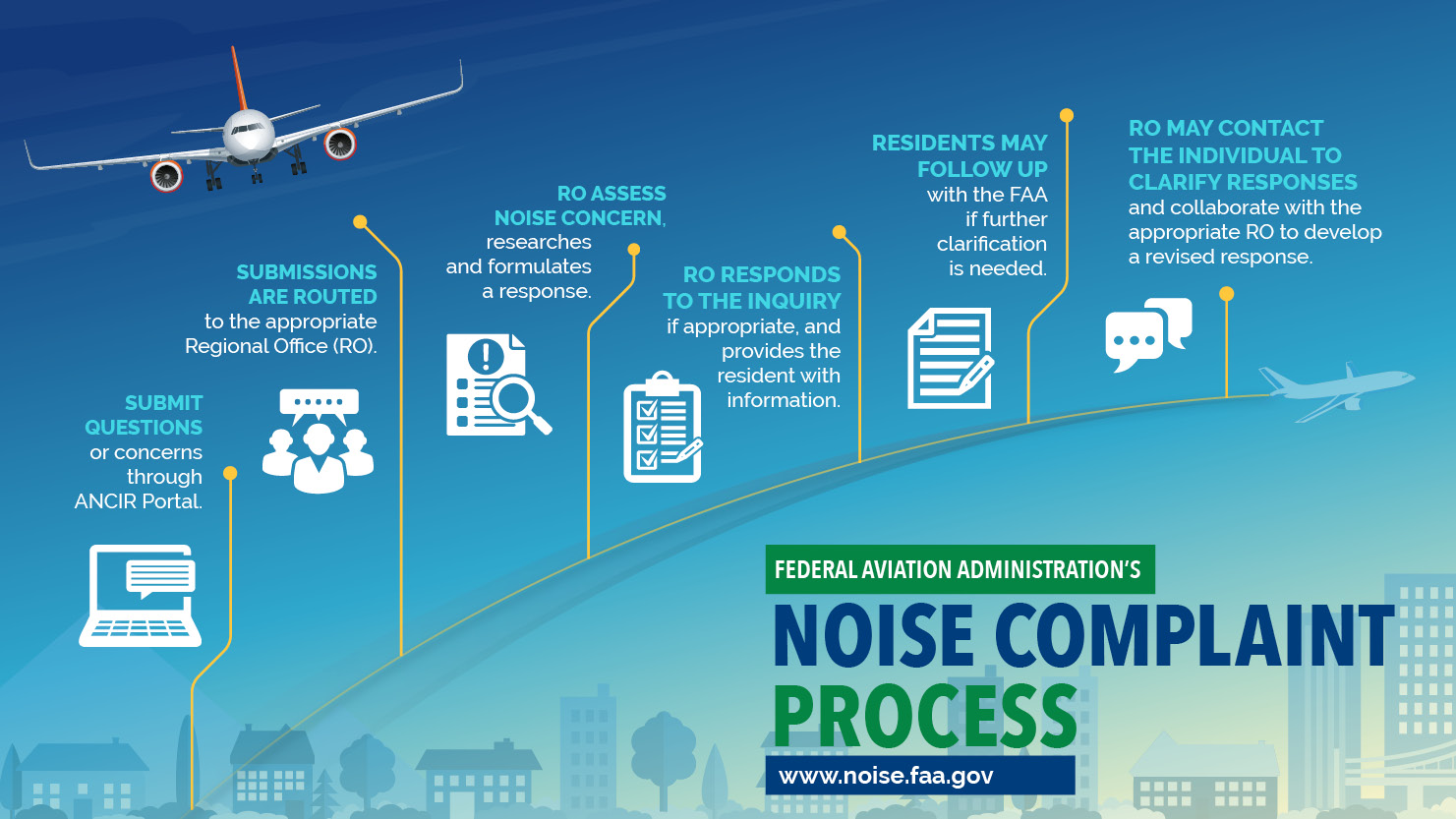Who Should I Contact with My Concern?
Noise at My Local Airport
For any concerns regarding noise from your local airport, it is best to reach out directly to the airport manager or staff. They are familiar with the noise abatement methods at the airport and have a good understanding of the local area.
Airports are chiefly responsible for noise reduction around their facilities, including site selection, design improvements, ground noise abatement, land acquisition, and usage restrictions—ensuring actions are fair, do not impede federal safety, or interfere with interstate or international commerce. State and local governments, along with planning agencies, support these efforts by incorporating land use planning to minimize noise impact on nearby residents.
Action Steps:
- Look up the airport's contact information online or in your local telephone directory.
- Many airports provide noise abatement information and contact details on their websites.
General Noise Concerns or Inquiries to the FAA
The FAA regulates aircraft noise and air traffic by establishing federal certification standards for aircraft noise, emission standards, developing flight procedures, and air traffic management practices. These efforts aim to ensure safety and efficiency of the airspace while minimizing the impacts of aviation noise near residential areas when feasible.
For concerns or inquiries about noise standards, environmental impacts, flight procedures, or air traffic management, you can share them directly with the FAA through the Aircraft Noise Complaint and Inquiry Reporting (ANCIR) Portal.
The ANCIR Portal allows you to:
- Submit detailed feedback or complaints regarding aircraft noise and provides a platform for addressing environmental questions related to FAA-regulated activities.
- Receive information from a subject matter expert to better understand FAA policies on noise management, community engagement, and air traffic operations.
- Complaints submitted to the ANCIR Portal rarely lead to changes in airspace; however, they do provide valuable insights to the FAA and policymakers about areas of noise concern.

Other Complaint or Inquiry Types: Low-Flying Aircraft, Helicopters, and Military
Noise from low-flying aircraft is not considered a safety issue and should not be reported to an FAA Flight Standards District Office (FSDO). However, if you observe an aircraft operating unsafely/flying in a potentially hazardous manner, you should contact your regional FSDO.
Helicopters generally fly under visual flight rules (VFR) in which case they are not required to file a flight plan. As a result, historical flight track data is often not available to help identify helicopters by their registration numbers. Additionally, the FAA does not have restrictions that prevent helicopters from hovering.
Aircraft safety, including helicopter safety, is governed by 14 CFR Part 91.119, which sets minimum safe altitudes but allows helicopters to operate lower than other aircraft, given their operational ability to better avoid hazards to people or property on the ground. This flexibility accommodates their unique capabilities and specific roles like emergency response, while still prioritizing ground safety.
Under 14 CFR Part 91.119, minimum safe altitudes for aircraft are as follows:
- Over Congested Areas: Aircraft must fly at least 1,000 feet above the highest obstacle within a 2,000-foot horizontal radius.
- Over Open Areas: In areas like open water or sparsely populated regions, aircraft must stay at least 500 feet away from any person, vessel, vehicle, or structure.
- A helicopter may be operated at less than the minimums listed above provided each person operating the helicopter complies with any routes or altitudes specifically prescribed for helicopters by the FAA.
- Anywhere Else: Aircraft should fly at an altitude allowing for an emergency landing without undue risk to people or property on the ground, even if specific minimums don’t apply.
Action Steps:
- For information about specific helicopter operations, contact the helicopter operator directly.
- If you believe helicopters are flying unsafely, report your concerns to your local FAA FSDO.
- If you would like to share your noise concern with the FAA, please visit the Aircraft Noise Complaint Inquiry and Reporting (ANCIR) Portal and submit an inquiry.
Noise from Military Aircraft
The FAA does not release information regarding the operations of military aircraft. If you live near a military installation, contact their noise office or community relations department for more information on their operations in your community. If the military base was not responsible for the noise you experienced, they may be able to direct you to the correct military installation for more information.
Last updated:
